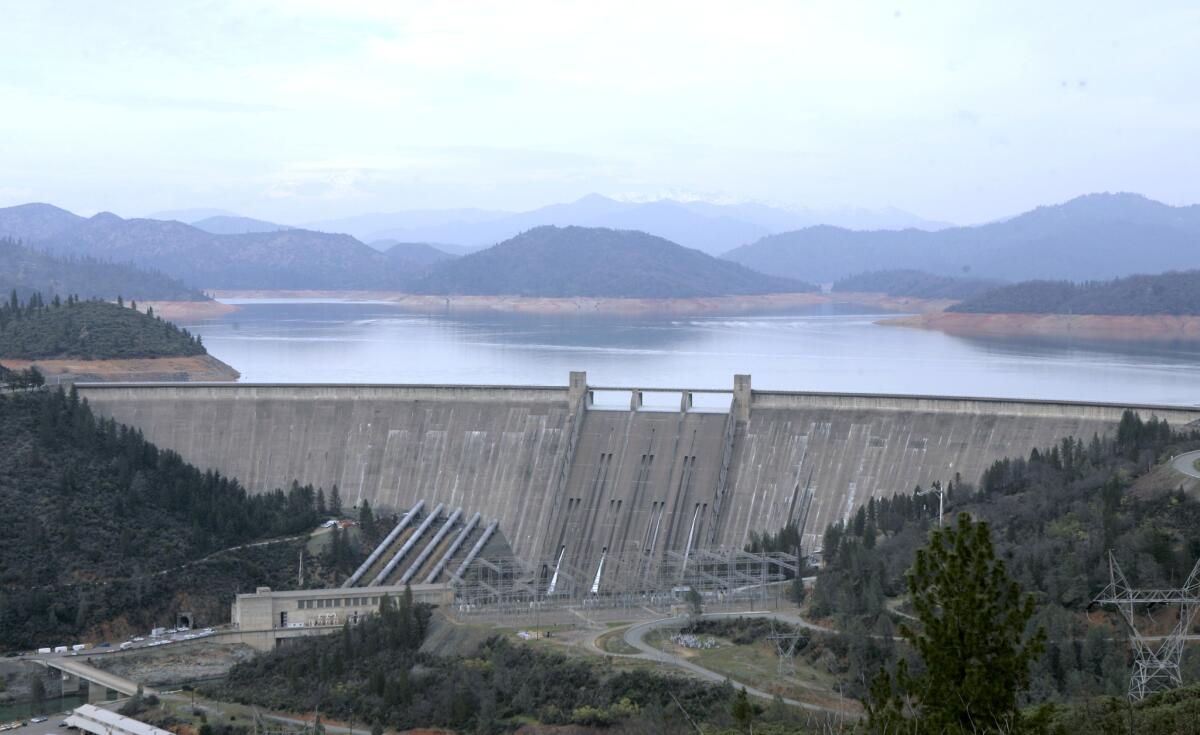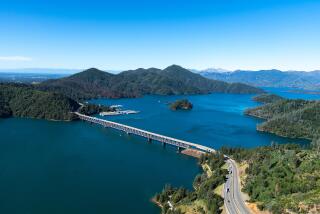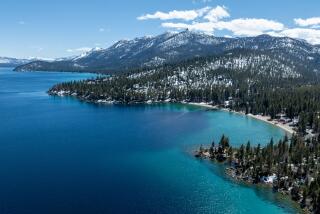New water year kicks off with surplus: California has greater reservoir storage than last year

California has more water stored in its reservoirs than it did a year ago after a marathon wet winter that pounded the state with rain and blanketed its mountain ranges with snow.
Statewide reservoir water storage is 128% of average, which amounts to about 29.7 million acre-feet of water for California, the Department of Water Resources announced Tuesday.
One of the largest reservoir increases is at Lake Oroville, which is at 102% of average, compared with 62% of average this time last year. In addition, Shasta Lake is at 126% of average compared with 88% of average in 2018. The San Luis Reservoir is currently at 132% of average compared with 117% last year. In Southern California, Castaic Lake is at 112% of average compared with 108% last year.
The solid storage levels heading into the new water year — which begins Oct. 1 and runs through Sept. 30 — is uplifting for a state only three years removed from a historic drought, said Chris Orrock, a spokesman for the water agency.
“The significant rainfall and snowpack made for a great water year in 2019, so we start the new year in a good place,” Department of Water Resources Director Karla Nemeth said in a prepared statement. “However, we all know too well that California’s weather and precipitation is highly variable. What we could have today could be gone tomorrow. Conserve. Recycle. Recharge. People and the environment depend on it.”
Water storage levels were boosted by more than 30 atmospheric rivers that soaked the state during the winter. Many of those storms were coupled with cold fronts, which lowered temperatures and kept the snowpack — a key source of the state’s water supply — frozen and largely intact into the late summer.
This led to the biggest June snowpack in California in nearly a decade. In most recent years, the snowpack had dwindled to tiny or nonexistent levels by the start of summer, diminished by rising spring temperatures that caused the accumulated snow to melt.
But not this year.
In early June, the snow blanketing the vast Sierra Nevada mountain range was 201% of average — even larger than the snowpack at the same time period in 2017, a banner year for precipitation that pulled large swaths of Northern California out of persistent drought conditions.
Although the state saw significant precipitation that year, most of that rain was the result of warm atmospheric rivers, which created conditions that caused the snowpack to melt quickly during the spring and forced officials to release already-stored water from reservoirs to prevent downstream flooding. As a result, reservoirs were not able to capture and maintain as much water, Orrock said.
“That wasn’t the case this year,” he said. “We had some small releases in early spring for flood control, but as the snow slowly melted, it continued to replenish the reservoirs.”
Still, officials cautioned that Californians must continue to conserve water despite this year’s increased storage. There’s no way for officials to accurately predict how long the stored water will last or whether the state will see another wet winter in 2020, Orrock said.
“We’re in a good position starting the water year, but who knows what’s going to come,” he said. “We just have to wait and see.”
More to Read
Sign up for Essential California
The most important California stories and recommendations in your inbox every morning.
You may occasionally receive promotional content from the Los Angeles Times.











